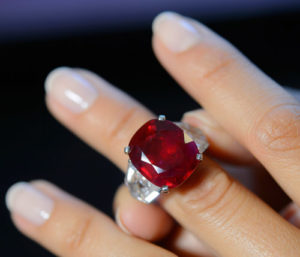
Ruby pigeon blood (photo)
Ever wondered why some natural minerals have their own separate names? The whole point is not only in the varieties of a particular group, but also in the shade of the mineral. So, for example, among rubies, specimens of the “pigeon blood” color are of particular value. What kind of gem is this, and why does its value sometimes exceed the cost of multi-colored diamonds? More on this later in the article.
Description
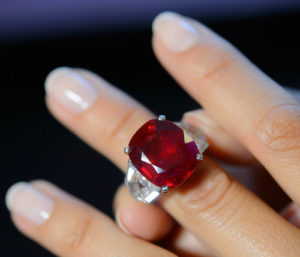
Ruby is one of the most expensive minerals on planet Earth. By its nature, it is a variety of corundum, and in composition it is almost identical to sapphire.
The red color of a ruby is due to the presence of chromium in the composition. It is from its quantity that the final color of the stone depends. So, the shade of the mineral can be different: red, red-brown, red-purple, red-pink. But a special place in this color scheme is occupied by a pigeon's blood ruby. This name was coined by a Swiss gemologist. He noticed that the color of the stone fully corresponds to the drops of blood of a freshly killed dove - dark red, rich, juicy, with a slight bluish tint.
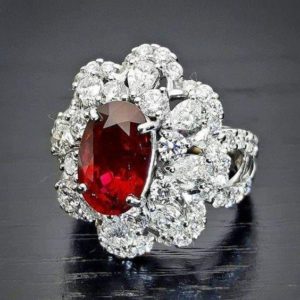
The highest quality gems are mined in Burma or Myanmar. It was here that pigeon blood rubies were found, which then went to auctions at a fabulous price. For example:
- Patino. A ring with this ruby of 32,08 carats was sold at an auction in Geneva for $6,736.
- Harry Winston weighing 8,99 carats was bought for almost $4 million.
- The owner had to pay about $ 6 million for the Regal ruby, however, the stone also had simply excellent characteristics.
- Cartier brooch with an exceptional 10,1 carat ruby worth $8,5 million.

- And finally, the Sunrise ruby was sold at an auction in Geneva for a mind-boggling $30,3 million in 2015. By the way, he belonged to the same house Cartier.
Surprisingly, all these pigeon-blood rubies are from Myanmar.
If you decide to buy such a gem, then you should remember that it will never be perfect. Various inclusions are a sign that the stone grew in the wild, that is, in nature. If in front of you is the purest mineral, with perfect transparency and without a single crack, then most likely it is a fake.
What affects the cost of a stone?
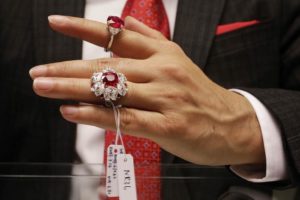
When pricing a ruby pigeon blood, experts take into account many factors:
- Color. It should be clean, uniform, saturated.
- Purity. Cracks, scratches, inclusions, visible turbidity significantly affect the final value of the mineral. However, at the same time, all these defects indicate the natural origin of the gem.
- Type of cut in the finished product. It completely affects the beauty of the stone, its brilliance and radiance. A high-quality ruby goes through all stages of processing, and quite thorough. Often, in order to determine the authenticity of a gem, they first of all look at its cut. An expensive ruby is cut in the best possible way.
- The weight. Naturally, carats almost primarily affect the value of a pigeon's blood ruby. However, large stones are very, very rare, if not to say never at all.
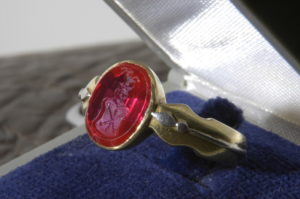
Pigeon blood rubies are truly gorgeous and stunning. We can safely say that in ancient India they were right, believing that this variety of corundum rightly bears the title of "king" among other minerals found in nature.
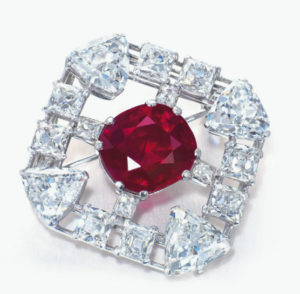
Leave a Reply